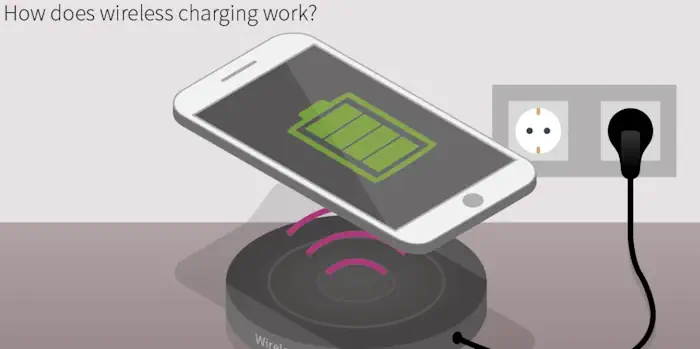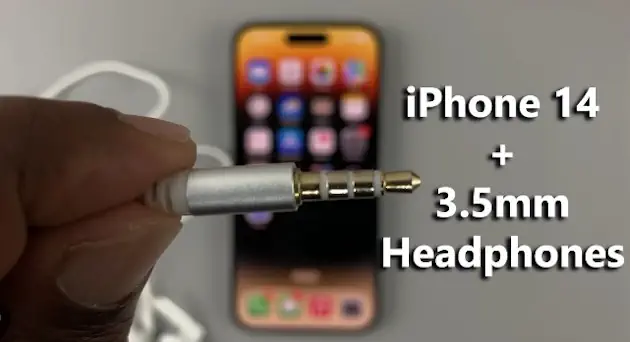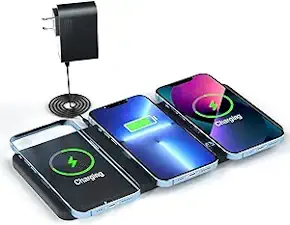Wireless charging is like magic, but for your phone. You just place your phone on the charger and it starts charging automatically. No more messing with cords or forgetting to plug it in. And it’s totally safe, too.
But is it that simple? Or is there more to it?
Let’s dive in together and discover exactly how wireless charging works.

How does wireless charging work?
Wireless charging works on the principle of electromagnetic induction. This is the production of a voltage across a conductor when it is exposed to a changing magnetic field.
Wireless charging systems typically consist of two coils: a transmitter coil and a receiver coil. The transmitter coil is connected to a power source and generates a magnetic field. The receiver coil is placed in the magnetic field and converts the magnetic energy into electrical energy, which can then be used to charge a battery or power a device.
Types of wireless charging
Wireless charging can be broadly classified into two types, namely inductive charging and resonant charging.
Inductive charging is the most common type of wireless charging and is used in devices such as smartphones, smartwatches, and wireless earbuds.
Resonant charging is a less common type of wireless charging and is used in devices such as electric vehicles and medical implants.
Inductive wireless charging
Inductive wireless charging is the most common type of wireless charging. It is based on the principle of electromagnetic induction, which is the production of a voltage across a conductor when it is exposed to a changing magnetic field.
Inductive wireless charging systems typically consist of two coils: a transmitter coil and a receiver coil. The transmitter coil is connected to a power source and generates a magnetic field. The receiver coil is placed in the magnetic field and converts the magnetic energy into electrical energy, which can then be used to charge a battery or power a device.
These systems typically require the transmitter coil and receiver coil to be closely aligned in order for the charging to be efficient.
This is why inductive wireless chargers often have a specific spot where you need to place your device in order for it to charge.
Inductive wireless charging is used in a variety of devices, including smartphones, smartwatches, wireless earbuds, electric toothbrushes, and even some medical implants.
It is a convenient and efficient way to charge devices, and it is becoming increasingly popular as more and more devices support wireless charging.
Resonant wireless charging
Resonant wireless charging is a type of wireless power transfer (WPT) that uses the principle of resonance to transmit power between two devices without the need for physical contact.
It works by coupling two resonant circuits together, one in the transmitter and one in the receiver.
When the two circuits are tuned to the same resonant frequency, they exchange energy efficiently, even over relatively large distances.
Resonant wireless charging has a number of advantages over traditional inductive charging, which is the most common type of wireless charging used today.
- Resonant charging can be done over longer distances, up to several meters in some cases. This is because resonant charging is not as sensitive to misalignment between the transmitter and receiver coils.
- Resonant charging can be more efficient than inductive charging, especially at higher power levels.
- Resonant charging can be used to charge multiple devices simultaneously, as long as they are all tuned to the same resonant frequency.
Resonant wireless charging is still under development, but it has the potential to revolutionize the way we charge our devices. It could be used to create wireless charging pads that can charge multiple devices at once, even if they are not perfectly aligned. It could also be used to create wireless charging systems for electric vehicles and other high-power applications.
Benefits of wireless charging

Here are some of the benefits of wireless charging:
- Convenience: Wireless chargers allow you to charge your device anywhere, anytime, without worrying about plug-ins. You can simply place your phone on the charging pad and it will start charging automatically.
- Universal compatibility: Most wireless chargers use the Qi standard, which is supported by a wide range of devices, including smartphones, tablets, smartwatches, and earbuds. This means you can use the same charger for all of your devices, regardless of the brand or model.
- Safer connections: Wireless charging eliminates the risk of electrical faults caused by damaged or frayed charging cables.
- More durable: Wireless charging reduces the wear and tear on your phone’s charging port, which can extend the life of your device.
- Won’t overheat your phone: Wireless chargers are designed to regulate the charging speed to prevent overheating.
In addition to these benefits, wireless charging is also becoming more affordable and accessible. There are now a wide variety of wireless chargers available, from budget-friendly models to high-end chargers with features like fast charging and multiple device charging.
Future of wireless charging
The future of wireless charging is very bright. As technology continues to advance, we can expect to see wireless chargers that are faster, more efficient, and more versatile.
Here are some of the trends that we can expect to see in the future of wireless charging:
- Faster charging speeds: Wireless charging speeds are already comparable to wired charging speeds, but they are expected to get even faster in the future. This will make wireless charging a more viable option for power-hungry devices like laptops and electric vehicles.
- More efficient charging: Wireless chargers are becoming more efficient, meaning that less energy is lost during the charging process. This will result in more efficient charging and less wasted energy.
- More widespread adoption: Wireless charging is becoming more and more popular, and we can expect to see it adopted by even more devices and industries in the future. For example, we may see wireless charging pads embedded in furniture or even built into roadways.
- More versatile charging: New wireless charging technologies are being developed that will make wireless charging more versatile. For example, some technologies allow for wireless charging at a distance, while others allow for multiple devices to be charged simultaneously.
Here are some specific examples of future wireless charging technologies that are being developed:
- Resonant charging: Resonant charging allows for wireless charging without the need for perfect alignment between the charger and the device. This is because resonant charging uses magnetic resonance to transfer power, which is not as directional as inductive charging.
- Long-distance charging: Long-distance charging technologies allow for wireless charging over distances of several meters. This is still in the early stages of development, but it has the potential to revolutionize the way we charge our devices.
- Beamforming charging: Beamforming charging is a technology that uses ultrasound to focus a beam of energy on a specific device. This allows for more efficient charging and less interference from other devices.
Wireless charging over distance
Wireless charging over distance is a technology that allows devices to be charged without the need for direct contact with a charging pad. This is done by transmitting energy through the air or other media, such as water or concrete.
There are a number of different technologies that can be used for wireless charging over distance, including:
- Radio frequency (RF) charging: RF charging uses radio waves to transmit energy to devices. RF charging systems typically have a range of several meters.
- Microwave charging: Microwave charging uses microwaves to transmit energy to devices. Microwave charging systems typically have a longer range than RF charging systems, but they can also be more dangerous.
- Inductive charging: Inductive charging uses magnetic fields to transmit energy to devices. Inductive charging systems typically have a shorter range than other wireless charging technologies, but they are also safer.
Wireless charging over distance is still in its early stages of development, but it has the potential to revolutionize the way we charge our devices. It could make it possible to charge devices without having to worry about finding a charging outlet or plugging in a cable. It could also make it possible to charge multiple devices at the same time, even if they are located in different rooms.
Personal experience
I’ve been using wireless to charge my electric toothbrush for a few months now and it’s great! (I still haven’t tried it for my phone, but I bet it’s equally awesome!)
It’s so much more convenient than having to plug it in all the time. I can just place it on the charging pad and it starts charging automatically. It’s also really fast, so I can always be sure that my toothbrush is charged when I need it.
I used to have to plug in my toothbrush every night, and it was always a hassle. I would often forget to plug it in, or I would have to fumble around in the dark to find the outlet.
But now with wireless charging, all I have to do is place my toothbrush on the charging pad and it starts charging automatically. It’s so easy and convenient!
I also love that wireless charging is so fast. My toothbrush is usually fully charged in less than an hour. This is great because I don’t have to worry about my toothbrush running out of battery in the middle of brushing.




